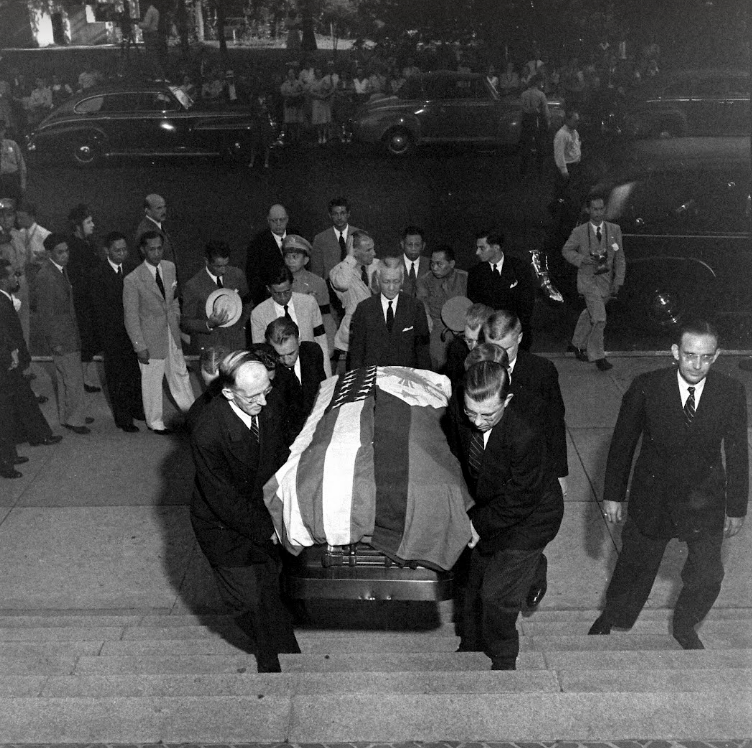
#TodayinHistory in 1903, Act No. 854 (Pensionado Act), was signed by US Gov-Gen W.H. Taft, allowing the US Insular gov in #PH to sponsor qualified Filipinos to study as scholars in the United States. This was but part & parcel of U.S. colonial apparatus on PH.
THREAD. #history
THREAD. #history

After ceding #PH as territory in Dec 1898 from Spain thru the Treaty of Paris, & defeating Filipino forces in the Philippine-American War, the United States set out to cement its control of PH w/ carrot-&-stick policy of "Benevolent assimilation."
https://twitter.com/indiohistorian/status/1478697656793051139?s=20&t=8wu_8815iGoJCu5nlBIFLA
Part of colonial apparatus was to woo Filipinos by opening civil gov positions to them, & flinging American education access doors wide open to Filipinos—an attempt to remake #PH in U.S. image. The coming of the Thomasites in Aug 1901—approx 600 U.S. teachers—began this project. 

The Thomasites' goal (named inspired by ship USAT Thomas they boarded to get to #PH) was to establish a PH public school system & pedagogy patterned after the U.S. They came from 192 U.S. institutions of learning, including @Harvard, @Yale, @Cornell, @UChicago, @UMich, @UCLA, etc
While many Filipino students were "eager to learn" due to lucrative opportunities presented to them, Thomasites found that this eagerness waned while students that remained, they found, were insatiable. Thomasite teacher Theodore De Laguna reported this to the colonial gov. 

The #PH Commission, made up of policymakers appointed by POTUS & granted executory & legislative powers, enacted Act No. 854, creating a gov-sponsored scholarship program for qualified Filipinos to go to America to study & gain positive image of the U.S.
https://twitter.com/indiohistorian/status/1278318381083447296?s=20&t=8wu_8815iGoJCu5nlBIFLA
Around 500 Filipino students, many from prominent families, benefited from the program, all of whom were required to serve the U.S. gov in #PH afterwards. They became known as "#Pensionados," a word used in Spanish colonial period in PH on students who received aid.
While many became success stories in the academe, some were not deferential to U.S. interest. Even as students, many became activists in the U.S. campuses, seeing the racism & unfairness 1st hand. This only firmed up the resolve among them for #PH independence from the U.S. 

Pensionados became #PH iconic figures.
Politics: Camilo Osias, Jorge Bocobo, Jose Abad Santos, Carlos P. Romulo, Esteban Abada, Antonio de las Alas;
Lit: Bienvenido Santos;
History: Encarnacion Alzona;
Archi: Carlos Barreto, Tomas Mapua, Juan Arellano
Politics: Camilo Osias, Jorge Bocobo, Jose Abad Santos, Carlos P. Romulo, Esteban Abada, Antonio de las Alas;
Lit: Bienvenido Santos;
History: Encarnacion Alzona;
Archi: Carlos Barreto, Tomas Mapua, Juan Arellano
https://twitter.com/indiohistorian/status/1501061823969525760?s=20&t=8wu_8815iGoJCu5nlBIFLA
Photos:
- First 100 Pensionado students at the 1904 St. Louis Exposition (unknown src)
- "School begins", by artist Louis Dalrymple, 25 Jan 1899, from @librarycongress
- USAT Thomas sailing to Manila, @USNHistory collection
- A Thomasite w/ students, @UCManila collection
- First 100 Pensionado students at the 1904 St. Louis Exposition (unknown src)
- "School begins", by artist Louis Dalrymple, 25 Jan 1899, from @librarycongress
- USAT Thomas sailing to Manila, @USNHistory collection
- A Thomasite w/ students, @UCManila collection
- "Filipinos at Ann Arbor," Detroit Free Press, October 27, 1901, D3, @UMich
For @subselfie.
@jmnualla
@tonitiemsin
For @subselfie.
@jmnualla
@tonitiemsin
• • •
Missing some Tweet in this thread? You can try to
force a refresh













